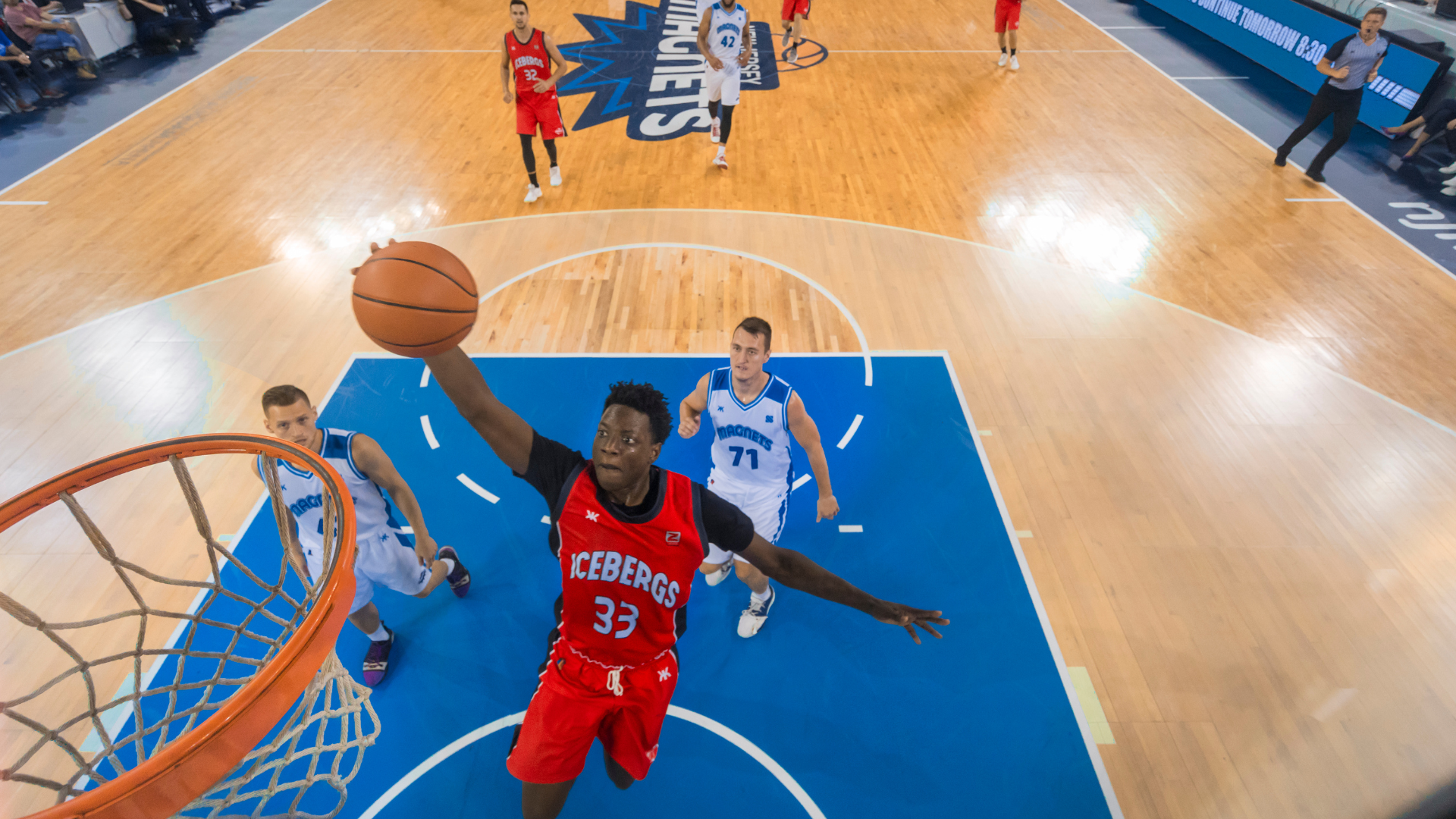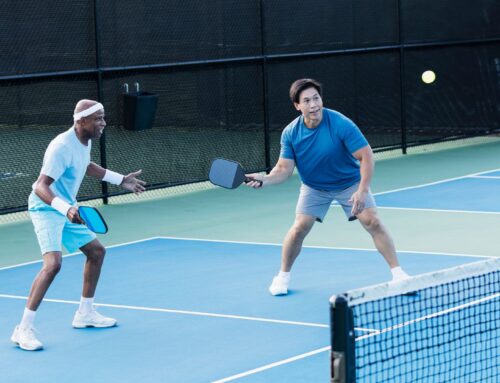Basketball is a fast-paced team sport that blends extreme athleticism and skills. Dribbling, shooting, passing, screening, defending and running across the court requires explosive power that makes players vulnerable to various injuries of the lower body.
To ensure a long and healthy basketball career, it is crucial to incorporate exercises to your routine that addresses the physical demands of the sport and your own playing style.
In this blog, we will go through key concepts to include in your training regimen to limit the risk of injury, including flexibility and mobility training, strength training, conditioning and plyometrics for basketball.
Table of Contents:
- Physical demands of basketball
- Flexibility and mobility training for basketball
- Strength training for basketball
- Conditioning for basketball
- Plyometrics for basketball
- Conclusion
Physical Demands of Basketball
In basketball, the game involves the following components that put players at risk of injuries:
- Excessive jumping (with or without contact): Jumping is a fundamental aspect of basketball, whether it’s contesting a shot, going for a rebound, or executing a layup or dunk. However, repetitive jumping, especially in situations involving contact with other players, can strain muscles and joints, leading to injuries such as sprains, strains, and even fractures.
- Rapid acceleration and deceleration: Basketball is a fast-paced sport that requires frequent changes in speed and direction. Players often accelerate quickly to drive past defenders or chase down loose balls, followed by abrupt deceleration to stop or change direction. These sudden changes in motion put stress on the muscles and ligaments, increasing the risk of strains, tears, and overuse injuries.
- Lateral movements and pivoting: Players frequently engage in lateral movements, such as shuffling to stay in front of an opponent or sliding to close out on a shooter. Pivoting, which involves rotating on one foot while maintaining balance, is another common movement used to evade defenders or create space for a shot. However, improper technique or excessive force during these movements can strain the knees, ankles, and hips, leading to sprains, strains, or ligament damage.
- Staying in low and wide positions: Basketball often requires players to adopt low and wide stances for defensive purposes, such as guarding an opponent or establishing position in the post. Maintaining these positions places significant stress on the lower body muscles, particularly the quadriceps, hamstrings, and glutes. Prolonged periods in low and wide positions can lead to muscle fatigue, decreased agility, and an increased risk of knee and back injuries.
These components highlight the dynamic nature of basketball and the physical demands it places on players. To mitigate the risk of injuries, athletes must prioritize proper conditioning, technique, and injury prevention strategies, such as strength training, flexibility exercises, plyometrics for basketball and adequate rest and recovery.
Additionally, coaches and medical staff, including physiotherapists, play a crucial role in educating players about injury prevention techniques and implementing measures to ensure their safety on the court.
Flexibility and Mobility Training for Basketball
Mobility training is important for control of the joints at end range positions. In a defensive stance, players sink into their hips, knees, and ankles while spreading both legs and arms as wide as you can. In a previous study tracking university basketball players, improved hip mobility was correlated with improved performance stats (i.e. games played, minutes per game, points per game, rebounds, steals, and blocks).[i]
To improve performance in this position, you should have both the flexibility and mobility to do this:
- Flexibility: to get into the end range of motion passively. This can be done through stretching.
- Mobility: to move actively through the range of motion. This can be active exercises that move the joint through the full range of motion.
Strength Training for Basketball
In addition to playing and training for the game, incorporate a strengthening program to ensure that your body is strong enough to handle the demands of the game. In a previous study, there have been correlations identified between muscular injuries and force generation and/or peak force.[ii] For basketball, players should ensure that they include the following:
- Single Leg Strengthening – there are many basketball movements where it involves pushing off one leg. Exercises such as lunges, Bulgarian split squats, Cossack Squats, or Step ups can help you prepare for these demands.
- Eccentric Strengthening – eccentric training involves contracting muscles as they are being stretched, which is important when players quickly change acceleration. Some exercises that are included in this category are Nordic curls, reverse Nordic curls, or even just increasing the time spent when eccentrically contracting or lowering the weight.
- Core Strengthening – core strength is critical when absorbing contact from other players in the air. Make sure to incorporate both stability exercises (e.g. planks, Pallof press variations, and Copenhagen planks) and dynamic core exercises (e.g., wood chops, reverse wood chops, leg lifts)
Conditioning for Basketball
Basketball is a high-intensity sport that demands endurance and activities at high intensities. In addition to longer duration aerobic training, it is also important to incorporate high intensity cardiovascular exercises to improve overall fitness and reduce fatigue-related injuries, including:
- Interval running
- Sprints
- Shuttle runs
Plyometrics for Basketball
Plyometrics for basketball involves exercises that work on enhancing the ability to absorb and generate force, which is important for movements like lay ups, dunks, blocking, and jumping for loose balls. With these exercises, it’s important to move as quick as you can through the movement and focusing on how you are landing.
Plyometric patterns include:
- Hopping – Hopping exercises involve propelling oneself off the ground with a single leg in a controlled and explosive manner. This plyometric pattern mimics the quick, explosive movements required during basketball gameplay, such as driving to the basket or evading defenders. Incorporating single-leg hops can enhance balance, stability, and proprioception, which are crucial for executing precise movements on the court while minimizing the risk of injury. Variations of hopping drills may include forward hops, lateral hops, and diagonal hops, each targeting different muscle groups and movement patterns essential for basketball performance.
- Bounding – Bounding exercises emphasize elongated strides and powerful propulsion off one foot to cover significant distances with each leap. This plyometric movement replicates the extended strides and explosive acceleration needed during fast breaks or when transitioning from defense to offense. Bounding drills not only enhance lower-body strength and power but also improve coordination and timing, allowing basketball players to effectively maneuver past opponents and capitalize on scoring opportunities. Incorporating variations such as single-leg bounds or alternating bounds can further challenge athletes to develop unilateral strength and dynamic stability, essential for maintaining control and explosiveness during high-intensity game situations.
- Pogos – Pogo exercises, also known as repetitive or continuous jumps, involve rapid, spring-like movements performed with minimal ground contact time. This plyometric pattern focuses on developing reactive strength and neuromuscular coordination, which are crucial for executing explosive jumps and rapid changes in direction during basketball gameplay. Pogo drills typically include exercises such as double-leg vertical jumps, alternating leg jumps, or multi-directional pogos, each targeting specific muscle groups and movement mechanics essential for enhancing agility and vertical propulsion on the court. By emphasizing quick and efficient force production, pogos help basketball players improve their ability to explode off the ground, elevate for rebounds, and outmaneuver opponents with sharp, explosive movements.
Incorporating a well-rounded plyometric training program tailored to the demands of basketball can significantly enhance an athlete’s explosiveness, agility, and overall performance on the court. However, it’s essential to prioritize proper technique, progression, and recovery to minimize the risk of injury and maximize the benefits of plyometric for basketball.
Conclusion
Injury prevention in basketball is a multifaceted approach that combines strength, flexibility and mobility, conditioning exercises and plyometrics for basketball. By incorporating a well-rounded training routine that addresses all these aspects, players can significantly reduce the risk of injuries and enjoy a healthy and successful basketball career.
Remember to consult with your healthcare provider before starting any new exercise program. Stay proactive in your approach to injury prevention, and let your dedication to an individualized training regimen contribute to a safer and more enjoyable basketball experience.
Contact us today to find out more about flexibility and mobility programs, strength training, conditioning programs and plyometrics for basketball.
References
[i] Mcgill,S.M., Andersen, J.T., Horne, A.D. (2012) Predicting performance and injury resilience from movement quality and fitness scores [J.Strength.Cond.Res.] Department of Kinesiology, University of Waterloo, Waterloo, Ontario; and Department of Athletics, Northeastern University, Boston, Massachusetts
[ii] Caparrós T, Peña J, Baiget E, Borràs-Boix X, Calleja-Gonzalez J and Rodas G (2022) Influence of Strength Programs on the Injury Rate and Team Performance of a Professional Basketball Team: A Six-Season Follow-Up Study. Front. Psychol. 12:796098. doi: 10.3389/fpsyg.2021.796098
Written by









